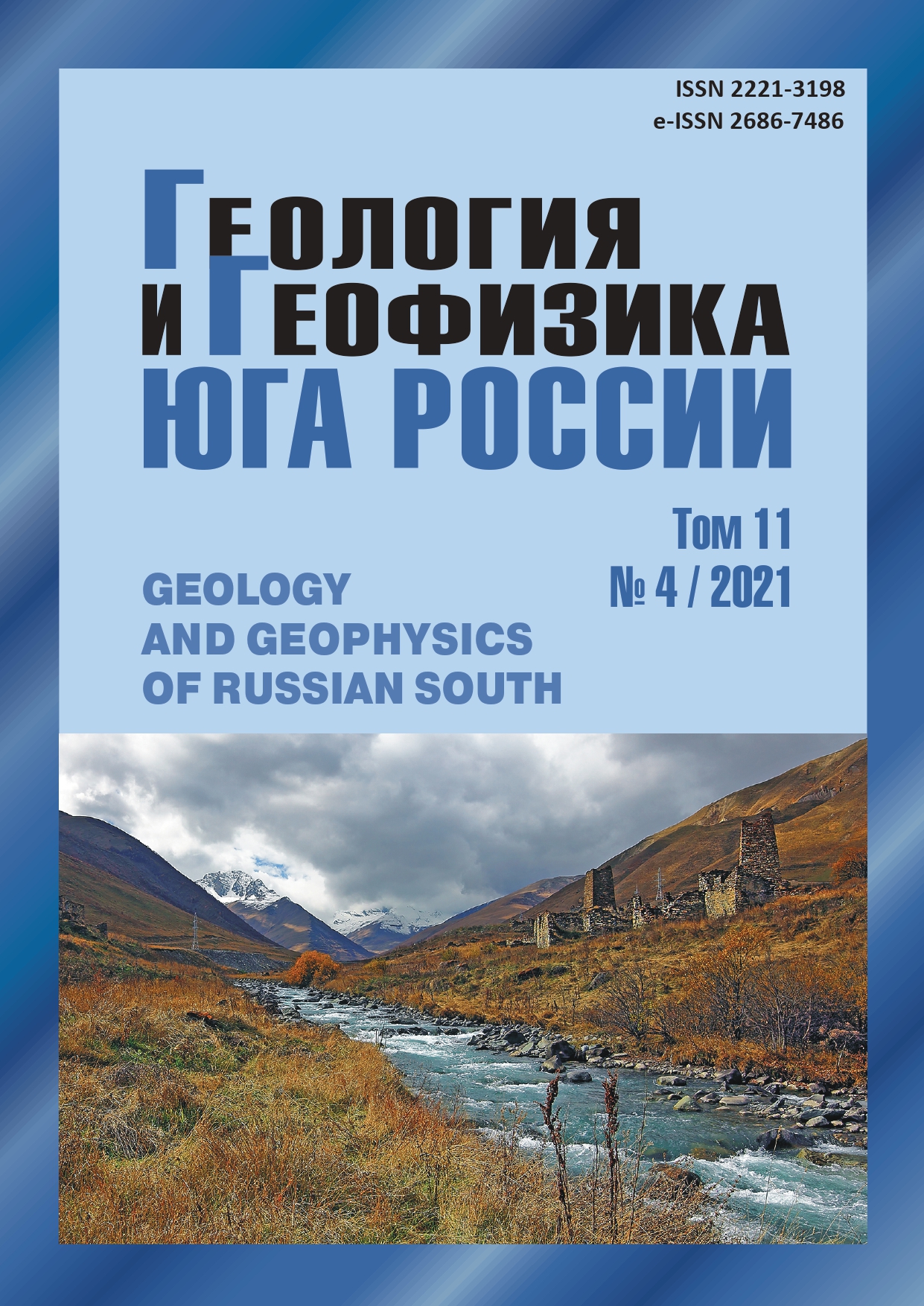Genesis and structure of the iron ore deposit of the Cape Iron Horn
Abstract
The article is devoted to an iron ore deposit, which is a layer of oolitic (brown limestone) iron ores, which comes to the surface during the day at Cape Iron Horn on the shore of the Taman Peninsula. The cape has a length of 1.3 km from west to east and a height of 55 m above sea level. The slope of the cape is broken by numerous cracks due to the erosive effects of wind and sea water, along which landslide bodies are chipping away. Relevance. The iron ore deposit at Cape Iron Horn of the Taman Peninsula has been known since the end of the 19th century, currently (since 1984) it has been given the status of a natural monument, which is why the extraction of raw materials is prohibited in the entire protected area of 19 hectares. However, mineralogy, paleontology and features of the geology of this deposit have not been studied enough. Thus, the presented article is intended to fill this gap to some extent. The Aim of the research is to identify the features of the geological structure, mineralogy and genesis of the iron ore deposit at Cape Iron Horn of the Taman Peninsula. Methods. The work is based on samples selected by the authors during field work at Cape Iron Horn from June to July 2021. During the work, 15 samples were described, as well as paleontological finds were identified and their approximate age was determined. Results. It has been established that brown ironstones lie in the thickness of gray clays of the Zheleznogorskaya formation (N1-2žr) and coincide with them in age, which is confirmed by paleontological findings. Only those minerals containing iron were found in the section: bornite, vivianite, limonite, chalcopyrite. The paper analyzes the structural and textural features of the formation and its host rocks, as well as the associations of the minerals found, on the basis of which it is concluded that this iron ore formation belongs to the chemogenic sedimentary type of deposits formed from colloidal solutions.


